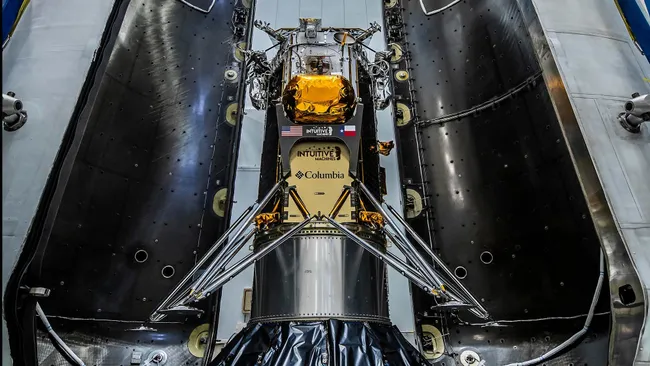As Cupid draws his bow on February 14th, another arrow will pierce the sky, but this one won’t be aimed at hearts – it’s headed for the Moon! The first Intuitive Machines (IM-1) mission blasts off on Valentine’s Day, marking a significant milestone in lunar exploration and public-private partnerships. This isn’t your average love story, though. Forget roses and chocolates; IM-1 carries critical scientific payloads, paving the way for future crewed missions and unlocking the Moon’s secrets. But why is this specific launch so special?
IM-1 Mission: The Pathway to Lunar Exploration
Led by Intuitive Machines, a renowned player in the aerospace industry, the IM-1 mission brings together cutting-edge technology and expertise to push the boundaries of lunar science. This private endeavor is fueled by the shared vision of advancing our understanding of the Moon and leveraging its resources for the benefit of humanity.
With its flagship lunar lander, Odysseus, at the forefront, the IM-1 mission is poised to pioneer groundbreaking research on the lunar surface. Equipped with state-of-the-art instruments, Odysseus will unravel the mysteries of the Moon, catapulting us into a new era of lunar science.
Odysseus: The Pioneer of Lunar Science
In the quest for scientific exploration on the Moon, the IM-1 mission introduces its groundbreaking lunar lander, Odysseus. With its advanced capabilities and cutting-edge technology, Odysseus is set to pioneer a new era of lunar science and propel our understanding of the Moon to new heights.
withstand the harsh lunar environment, Odysseus combines state-of-the-art engineering with scientific instrumentation, enabling in-depth research and analysis of the Moon’s geological composition, surface properties, and atmospheric conditions. Its robust landing system and precise landing technology ensure touchdown at the designated location, maximizing the potential for scientific discoveries.
As the IM-1 mission embarks on its journey to the Moon, Odysseus stands as a testament to human innovation and the relentless pursuit of knowledge. Its pioneering capabilities will revolutionize the field of lunar science and pave the way for future missions, ultimately propelling humanity towards new frontiers of space exploration.
| Instrument | Function |
|---|---|
| Lunar Imaging Camera | Capturing high-resolution images of the lunar surface |
| Spectrometer | Analyzing the composition of lunar rocks and soil |
| Seismometer | Detecting and analyzing moonquakes |
| Thermal Mapper | Mapping the heat distribution and thermal properties on the lunar surface |
A Historic Launch: Celebrating Valentine’s Day in Space
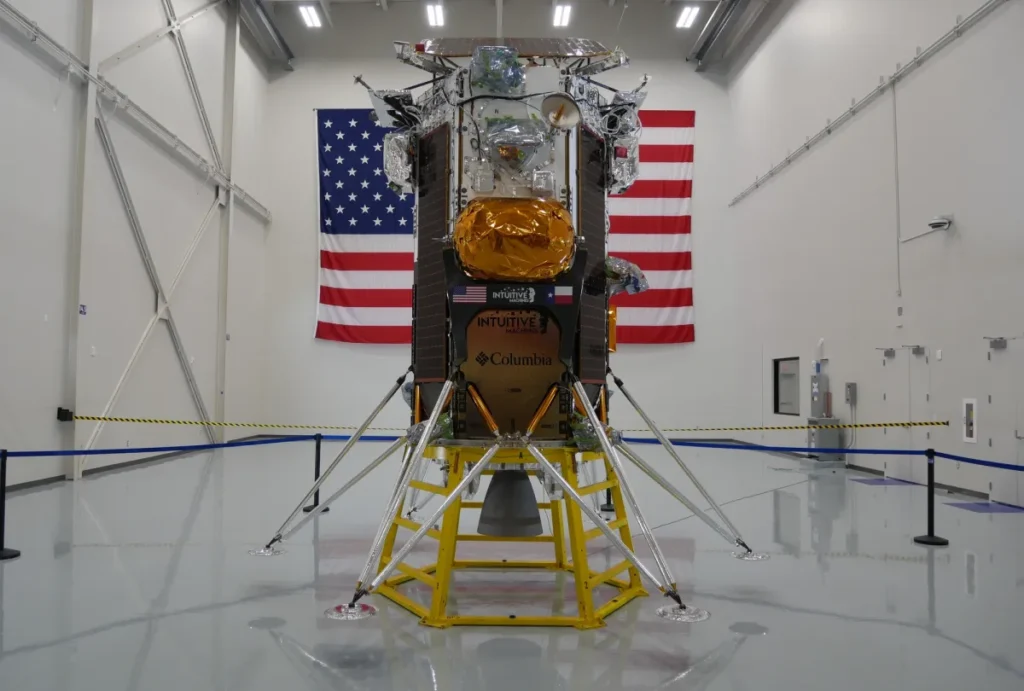
The IM-1 mission’s launch on Valentine’s Day marks a historic milestone in space exploration. This unique and romantic date holds a special significance as it symbolizes the union between human innovation and the vast expanse of the cosmos. As private spaceflight continues to revolutionize the industry, the IM-1 mission, in collaboration with SpaceX Falcon 9, exemplifies the power of partnership in pushing the boundaries of what is possible.
Valentine’s Day launch: Love is not the only thing in the air on February 14th. As the world celebrates this day of affection and devotion, the IM-1 mission ignites a spark of inspiration, sending a message that love knows no limits, even in the vastness of space. The choice of this auspicious day showcases the immense ambition and passion that drives the pursuit of lunar exploration.
Private spaceflight: With the rapid growth of private-sector space companies, the IM-1 mission represents a significant milestone in the era of commercial space exploration. Led by Intuitive Machines, this pioneering mission demonstrates the ability of private entities to contribute to scientific research, technological advancements, and the broader understanding of our universe.
SpaceX Falcon 9: Central to the success of the IM-1 mission is the powerful SpaceX Falcon 9 rocket. Known for its reliability and groundbreaking capabilities, Falcon 9 exemplifies the cutting-edge technology that drives private spaceflight. The partnership between Intuitive Machines and SpaceX underscores the collaborative nature of the aerospace industry, where innovation and expertise come together to create new opportunities for exploration.
A Partnership with NASA’s Commercial Lunar Payload Services
In their pursuit of advancing lunar exploration, the IM-1 mission has formed a valuable partnership with NASA’s Commercial Lunar Payload Services (CLPS) program. This collaboration between Intuitive Machines, the parent company of the IM-1 mission, and NASA’s CLPS program is set to bring immense benefits to both parties, as well as the broader scientific community.
Table: Synergistic Benefits of the IM-1 Mission and NASA’s CLPS Program Partnership
| Benefits for the IM-1 Mission | Benefits for NASA’s CLPS Program |
|---|---|
| Access to NASA’s expertise and resources Enhanced credibility and support for the mission Greater visibility and exposure in the space industry Opportunities for future collaborations | Expanded capabilities and reach through private-sector innovation Increased access to advanced technologies developed by Intuitive Machines Accelerated progress in lunar exploration objectives Promotion of public-private partnerships in space exploration |
Through this partnership, the IM-1 mission can leverage NASA’s vast experience and infrastructure in space exploration. Collaboration with NASA provides the mission with access to invaluable knowledge and resources, strengthening the mission’s credibility and support within the scientific community.
On the other hand, NASA’s CLPS program benefits from partnering with Intuitive Machines, a leading private-sector innovator in the space industry. This collaboration allows NASA to tap into Intuitive Machines’ advanced technologies, enhancing their capabilities for lunar exploration and propelling progress towards their objectives.
This partnership not only benefits the IM-1 mission and NASA’s CLPS program individually, but also serves as an exemplary model for public-private partnerships within the space industry. It highlights the power of collaboration and showcases the potential for private-sector innovation to drive meaningful advancements in space exploration.
Precision Landing Technologies for Lunar Exploration
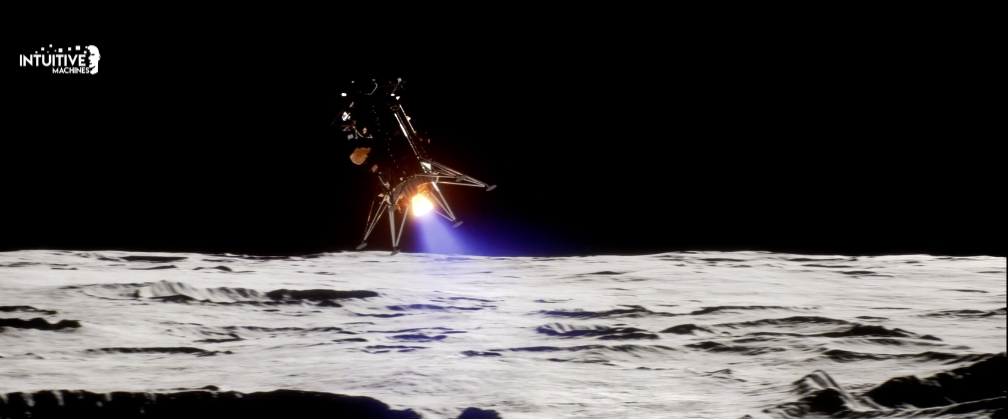
The IM-1 mission utilizes state-of-the-art precision landing technologies that are revolutionizing lunar exploration. These advanced systems enable the spacecraft to achieve precise touchdown at the lunar south pole, unlocking unparalleled opportunities for scientific exploration and discovery.
By incorporating cutting-edge technologies, the IM-1 mission ensures that the lunar lander, Odysseus, lands with unparalleled accuracy, minimizing the risks associated with landing on challenging lunar terrain. This precision landing capability opens up new avenues for conducting in-depth research and data collection in previously unexplored regions.
Through the integration of precise navigation algorithms, hazard detection systems, and cutting-edge landing sensors, the IM-1 mission ensures that Odysseus touches down in a carefully selected area of the lunar south pole. This strategic landing site offers a wealth of scientific opportunities, enriching our understanding of lunar geology, water resources, and potential for sustainable exploration.
To showcase the effectiveness of these precision landing technologies, consider the following table that outlines the key features and benefits:
| Technologies | Benefits |
|---|---|
| Advanced Navigation Algorithms | Accurate trajectory calculations for precise landing |
| Hazard Detection Systems | Real-time identification and avoidance of potential landing hazards |
| Landing Sensors | High-resolution data collection for detailed analysis of lunar surface conditions |
These precision landing technologies not only facilitate a successful lunar touchdown but also pave the way for future missions by providing crucial insights into landing site selection and operational planning. The IM-1 mission’s commitment to innovation and exploration guarantees that lunar science will continue to progress, unveiling the secrets of the Moon and expanding human knowledge of our celestial neighbors.
Charting Communication and Navigation Node for Lunar Missions
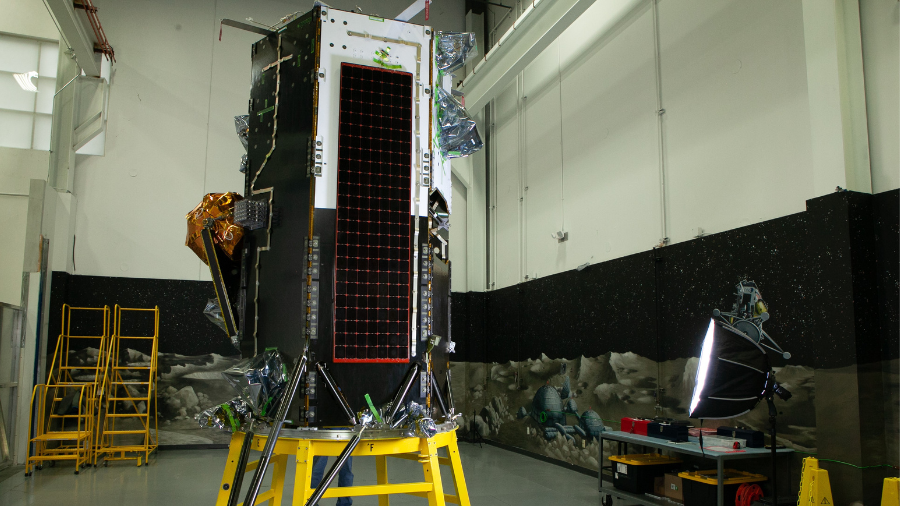
The IM-1 mission’s communication and navigation node is a critical component that facilitates seamless communication and navigation for present and future lunar missions. Serving as the central hub for data exchange and positioning, this node ensures that astronauts and robotic explorers can effectively navigate the lunar surface while maintaining constant connectivity with mission control.
The communication and navigation node encompasses a range of technologies and systems specifically designed for lunar exploration. It leverages advanced communication protocols to establish reliable and high-speed data links between lunar assets and Earth-based mission control centers, enabling real-time transmission of scientific data, telemetry, and astronaut communications.
Enhanced Communication Capabilities
The communication and navigation node incorporates cutting-edge antenna systems that enable direct communication between the lunar surface and Earth. These antennas leverage state-of-the-art signal processing techniques to mitigate the challenges posed by the lunar environment, such as signal attenuation and interference. With enhanced communication capabilities, astronauts and robotic missions can transmit and receive data with increased efficiency, enabling rapid data exchange and enhanced situational awareness.
Precise Positioning and Navigation
Accurate positioning and navigation are crucial for lunar exploration missions. The communication and navigation node integrates advanced sensors, including global navigation satellite system receivers and inertial measurement units, to precisely determine the location and orientation of lunar assets. This ensures precise trajectory guidance, enabling safe landings and optimal navigation across the lunar terrain.
Reliable Data Relay and Backup Systems
To ensure uninterrupted communication and navigation, the IM-1 mission’s communication and navigation node includes redundant systems and backup communication links. These redundant systems serve as fail-safe mechanisms, allowing for continued data exchange and positioning information in the event of primary system failures or temporary interruptions in communication. The reliability and resilience of these backup systems provide mission operators with the assurance of maintaining vital communication and navigation capabilities even in challenging lunar environments.
Overall, the communication and navigation node of the IM-1 mission plays a pivotal role in enabling successful lunar exploration. By establishing robust communication links and precise positioning capabilities, it paves the way for future missions, fostering scientific discovery and expanding our understanding of the Moon.
| Key Features of the Communication and Navigation Node | Benefits |
|---|---|
| Advanced antenna systems | Enhanced communication capabilities and increased data transfer speeds |
| Integrated global navigation satellite system receivers and inertial measurement units | Precise positioning and navigation for safe landings and efficient lunar exploration |
| Redundant systems and backup communication links | Uninterrupted communication and navigation capabilities in challenging lunar environments |
Unraveling Space Weather Interactions on the Moon
The IM-1 mission is embarking on an ambitious endeavor to unravel the mysteries of space weather interactions on the Moon. As we expand our understanding of lunar exploration, it becomes increasingly crucial to study how space weather affects our celestial neighbor. Space weather encompasses various phenomena such as solar flares, coronal mass ejections, and geomagnetic storms, which can have a profound impact on the Moon’s environment.
Space weather interactions on the Moon can influence several crucial aspects of lunar exploration, including:
- The safety of astronauts and equipment
- The functionality of communication and navigation systems
- The integrity of lunar infrastructure
- The reliability of power generation
- The potential for long-term habitation
By studying these interactions, the IM-1 mission aims to not only enhance the safety and efficiency of future lunar missions but also pave the way for sustained human presence on the Moon.
To facilitate this research, the IM-1 mission will deploy state-of-the-art instruments designed to measure and analyze various aspects of space weather interactions. These instruments will enable scientists to monitor solar particle flux, magnetic fields, and radiation levels on the lunar surface.
The data collected will not only contribute to our understanding of space weather but also provide valuable insights into the lunar environment. Such insights will be crucial for designing robust systems and protocols that can withstand and adapt to the challenges posed by space weather.
Crater Malapert A: A Gateway to Lunar Discoveries
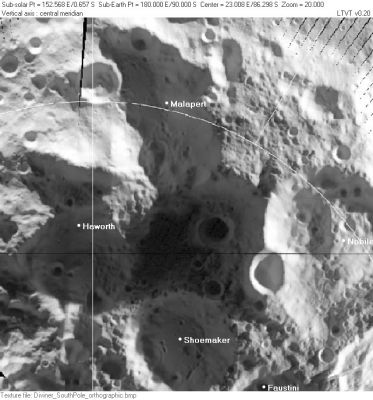
Located near the lunar south pole, Crater Malapert A has been strategically chosen as the landing site for the IM-1 mission, marking it as a crucial gateway for unlocking unprecedented lunar discoveries. This pristine and unexplored region holds immense scientific value, presenting scientists with unique opportunities to advance our understanding of the Moon and its evolution.
Crater Malapert A’s position near the lunar south pole provides several advantages for lunar science. The region is known for its permanently shadowed areas, where the Sun’s rays never reach. These areas are believed to retain ancient ice deposits, potentially harboring valuable resources and clues about the Moon’s past. By investigating these shadowed craters, the IM-1 mission aims to shed light on the origin and distribution of lunar volatiles, offering insights into the history of water on the Moon.
In addition to the potential ice deposits, Crater Malapert A offers a pristine geological record of the Moon’s surface. Its untouched nature preserves a wealth of information and provides a unique window into the Moon’s past. By studying the rocks and regolith within the crater, scientists can unravel the history of impact events and volcanic activity on the lunar surface, contributing to our understanding of planetary processes.
The IM-1 mission’s landing at Crater Malapert A will also enable observations of the lunar exosphere, the tenuous layer of gases surrounding the Moon. By studying the composition and dynamics of the exosphere, scientists can gain insights into the interactions between the Moon and its environment, including the solar wind and micrometeoroid impacts. This research is crucial for understanding the Moon’s role in the larger context of the solar system and the processes shaping planetary atmospheres.
Furthermore, Crater Malapert A’s location presents strategic advantages for future lunar missions. Its proximity to the lunar south pole offers access to regions of perpetual sunlight, which could be harnessed for solar power generation, providing a sustainable energy source for lunar outposts and facilitating further scientific exploration.
The selection of Crater Malapert A as the landing site for the IM-1 mission represents a commitment to exploring uncharted territories on the Moon and pushing the boundaries of lunar science. By studying this unique region, scientists aim to unlock profound insights into the Moon’s geological history, the presence of lunar volatiles, and the interactions between the moon and its environment. Crater Malapert A truly stands as a gateway to unparalleled lunar discoveries.
Conclusion
The IM-1 mission has proven to be a significant milestone in the realm of lunar exploration, showcasing the power of private-sector innovation in space exploration. With its advanced lunar lander, Odysseus, the mission is poised to unveil groundbreaking scientific discoveries on the Moon.
Marked by a historic Valentine’s Day launch, the IM-1 mission exemplifies the potential of private spaceflight in pushing the boundaries of space exploration. Supported by NASA’s Commercial Lunar Payload Services (CLPS) program, this mission sets the stage for future collaborations between government and private entities.
Featuring cutting-edge precision landing technologies, the IM-1 mission executes a flawless touchdown at the lunar south pole, enabling unparalleled scientific exploration. Its communication and navigation node ensures seamless connectivity for current and future lunar missions, revolutionizing the way we explore our celestial neighbor.
By selecting Crater Malapert A as its landing site, the IM-1 mission unlocks the potential for remarkable lunar discoveries. As we wrap up our exploration of the IM-1 mission, we anticipate the groundbreaking insights it will provide and the new frontiers it will pave for future lunar exploration endeavors.
FAQ
What is the IM-1 mission?
The IM-1 mission is a private-sector initiative aimed at advancing lunar exploration through innovative technology and scientific research.
What is Odysseus?
Odysseus is the lunar lander developed for the IM-1 mission. It is designed to facilitate groundbreaking scientific research on the Moon.
When is the IM-1 mission scheduled to launch?
The IM-1 mission is set to launch on Valentine’s Day, adding a unique significance to the mission’s celebration of space exploration.
How is SpaceX Falcon 9 involved in the IM-1 mission?
SpaceX Falcon 9 will provide the launch vehicle for the IM-1 mission, ensuring its successful journey to the Moon.
What is the role of NASA’s Commercial Lunar Payload Services program in the IM-1 mission?
The IM-1 mission is collaborating with NASA’s Commercial Lunar Payload Services program to enhance lunar exploration capabilities and further scientific discovery.
What are precision landing technologies?
Precision landing technologies are advanced systems that enable accurate touchdown at specific lunar locations, enhancing scientific exploration and research.
What is the communication and navigation node in the IM-1 mission?
The communication and navigation node serves as a vital component of the IM-1 mission, facilitating seamless communication and navigation for lunar missions.
Why is studying space weather interactions important for lunar exploration?
Understanding space weather interactions on the Moon is crucial for ensuring the safety of future lunar missions and optimizing scientific exploration.
What are plume-surface interactions?
Plume-surface interactions refer to the phenomena that occur when the exhaust plume of a lunar lander interacts with the lunar surface, impacting the lunar environment.
How does the IM-1 mission contribute to radio astronomy?
The IM-1 mission deploys instruments on the Moon’s surface to enable radio astronomical observations, expanding our understanding of the universe.
Why is Crater Malapert A significant for the IM-1 mission?
Crater Malapert A has been chosen as the landing site for the IM-1 mission due to its potential for uncovering valuable lunar discoveries and advancing scientific knowledge.
